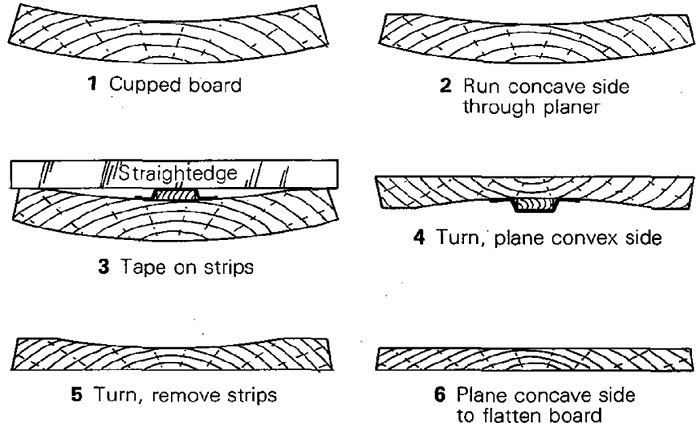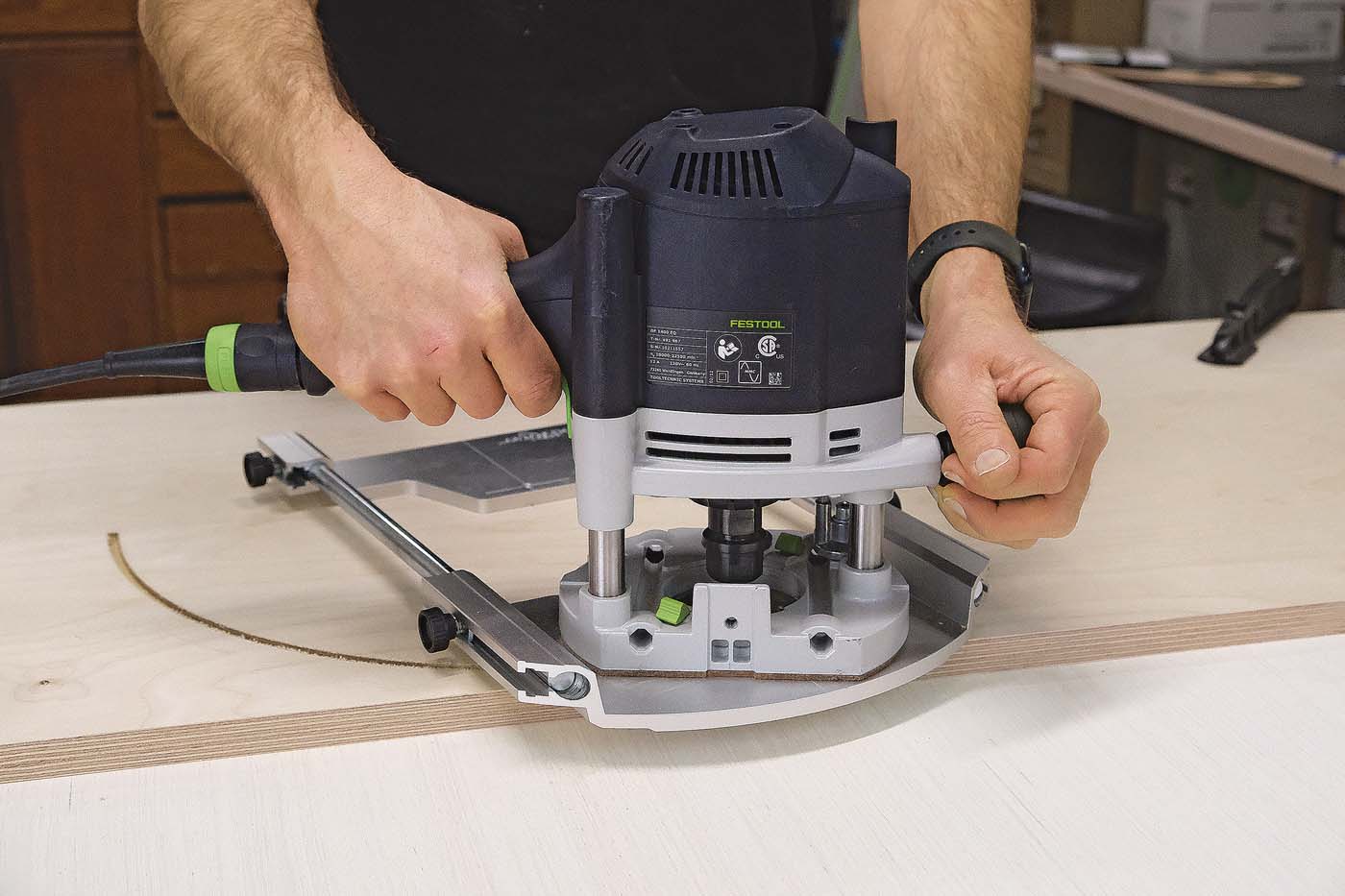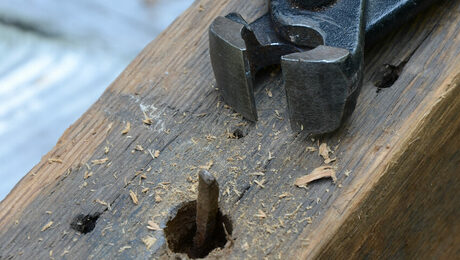Flattening Cupped Boards

It is difficult to flatten a cupped board with a thickness planer because the downward pressure of the feed rolls will press out much of the cup, thereby not allowing the planer knives to flatten the board. As it emerges from the planer, it simply springs back to its original cup. To counter the pressure of the feed rolls, I tape wooden strips to the concave side of the board. My method is designed for a planer with a single cutter positioned above the board as it passes through the machine.
First run the board through the planer with its concave side up to obtain an even surface along the edges that will make the next step easier. Now set a straightedge across the board, as shown, to determine the correct thickness for the wooden strips. It is usually easier to use several short strips than one long one, especially if the board is very long or irregularly cupped. With reinforced (cloth-backed) tape, fasten the strips to the board in the area of greatest depth of curvature. Wide masking tape will also work. Now run the board through the planer with the convex side up. The wood strips underneath will prevent the downward pressure of the feed rolls from flattening the cup. Thickness-plane until the convex side is flat, then remove the tape and strips and run the board through again, concave side up, until the concave side is also flat.
Dwight G. Gorrell, Centerville, Kans.
Fine Woodworking Magazine, Summer 1978 No. 11

Fine Woodworking Recommended Products

Hedgehog featherboards

Incra Miter 1000HD

Woodriver Circle Cutting Jig





















Log in or create an account to post a comment.
Sign up Log in